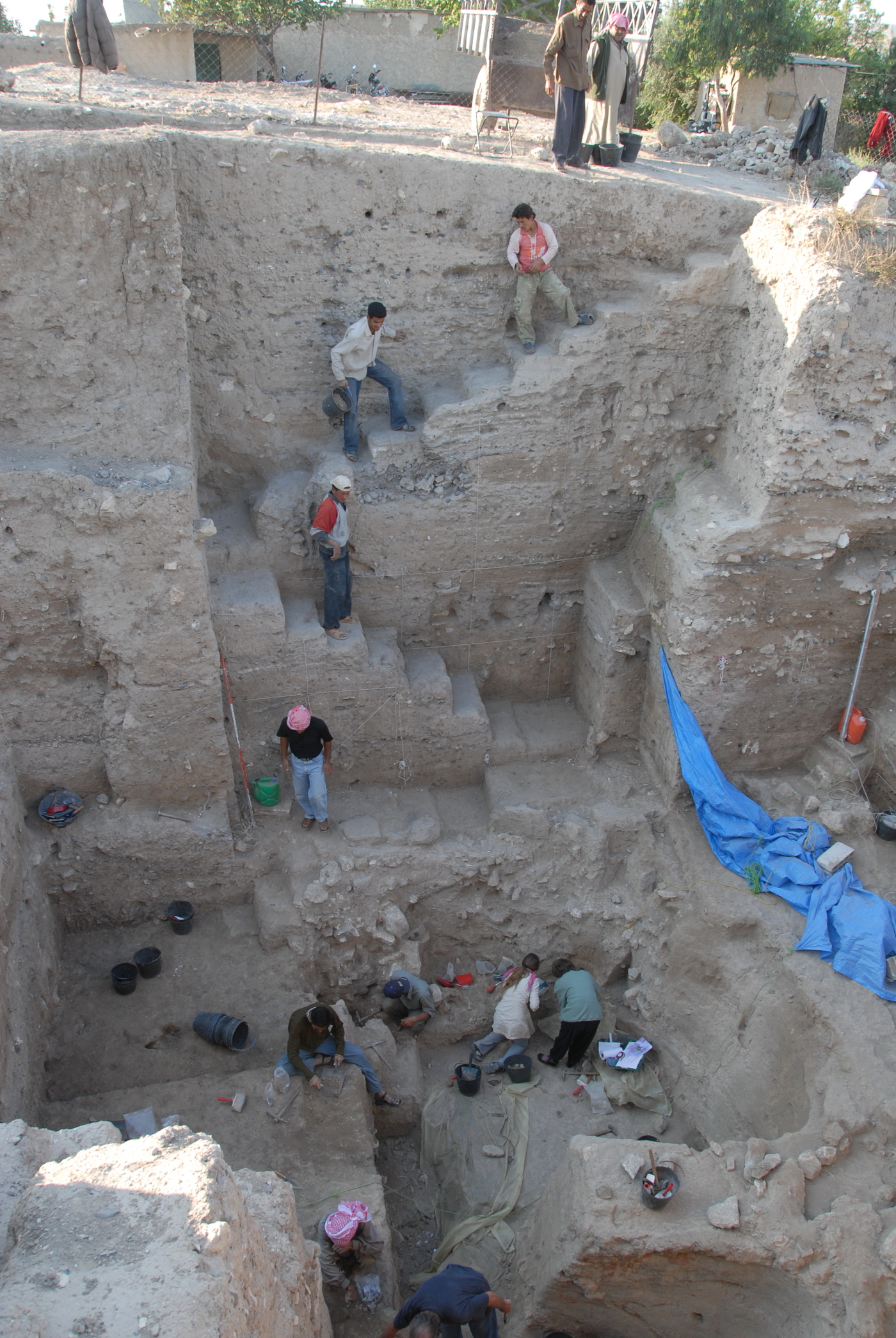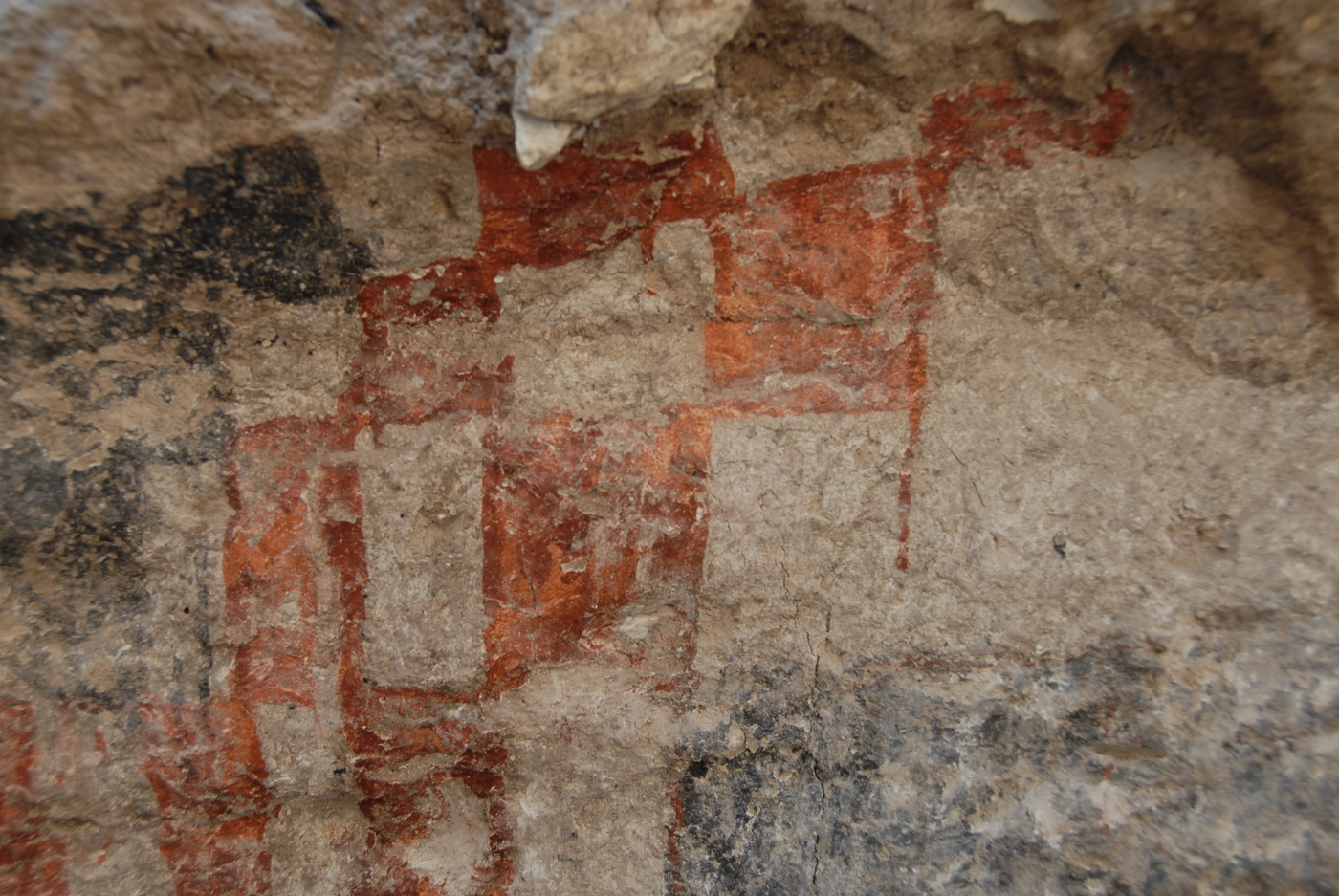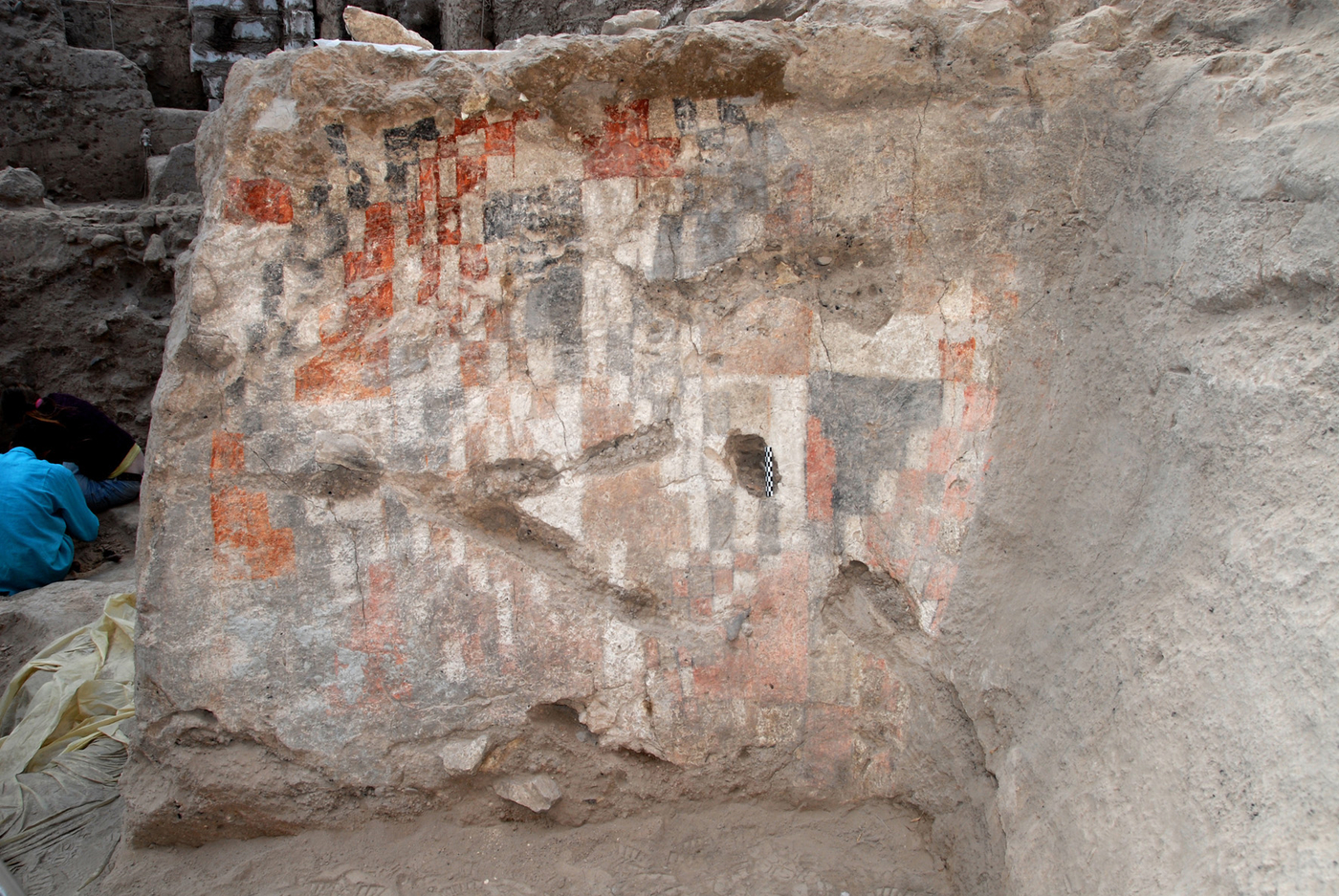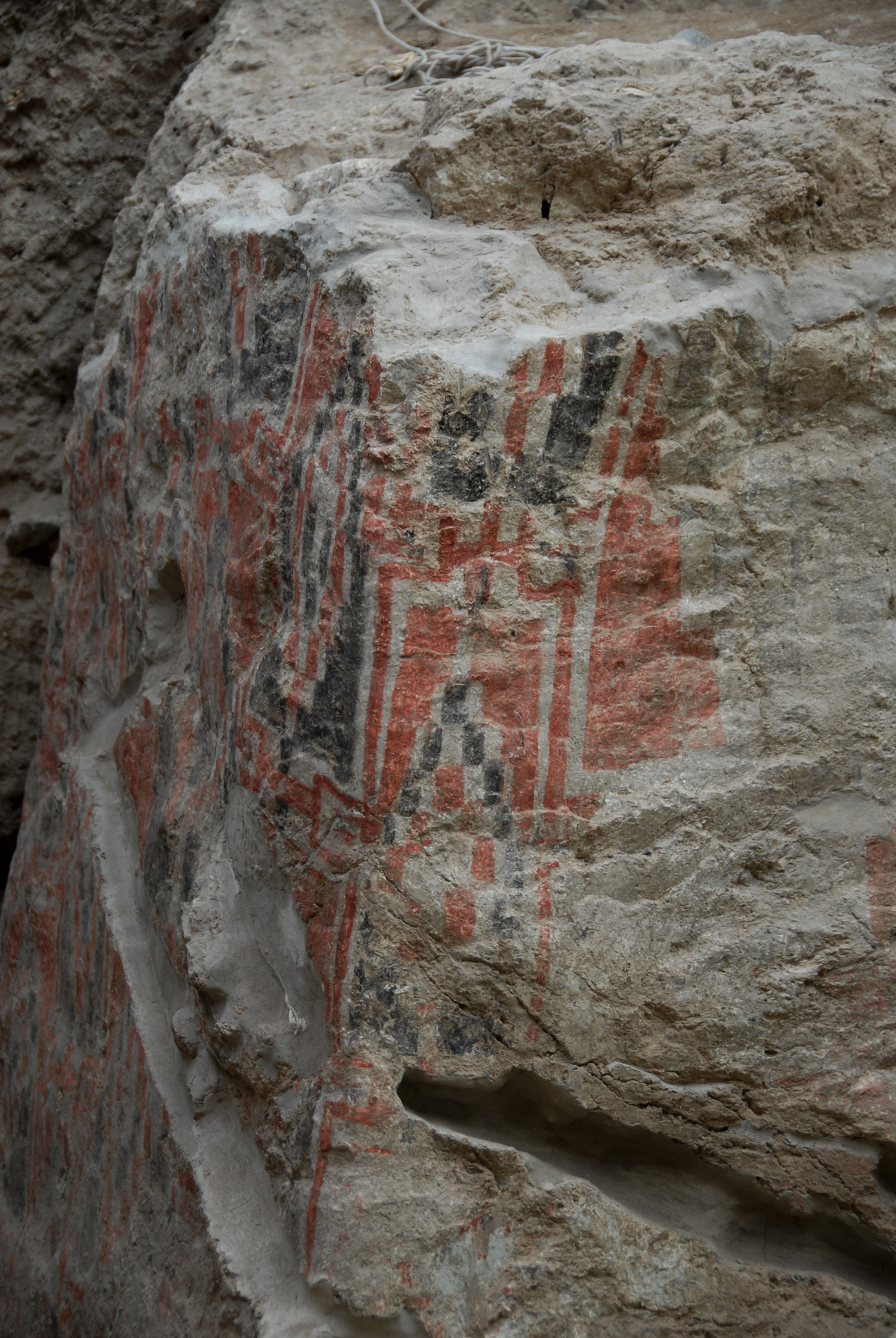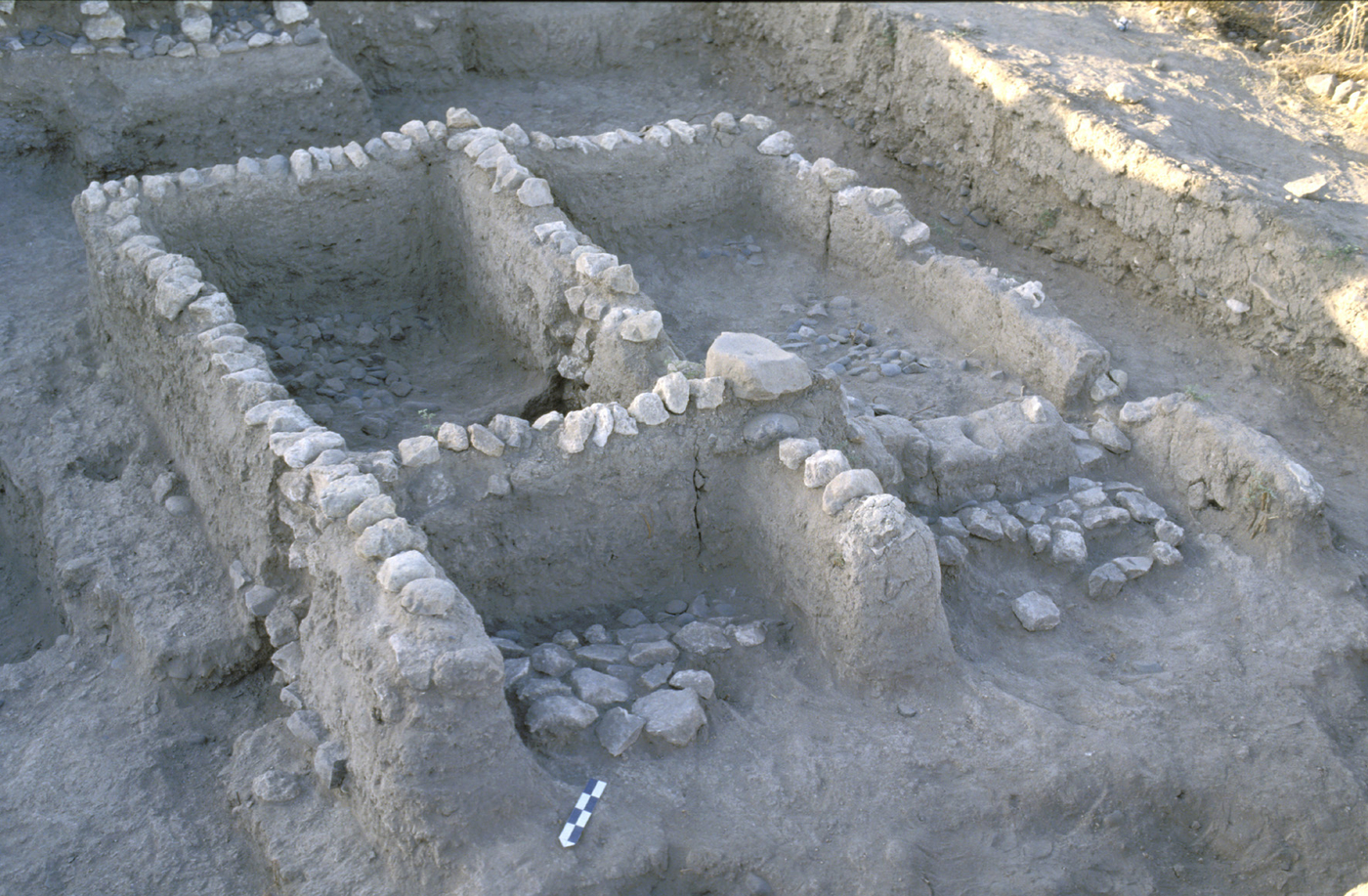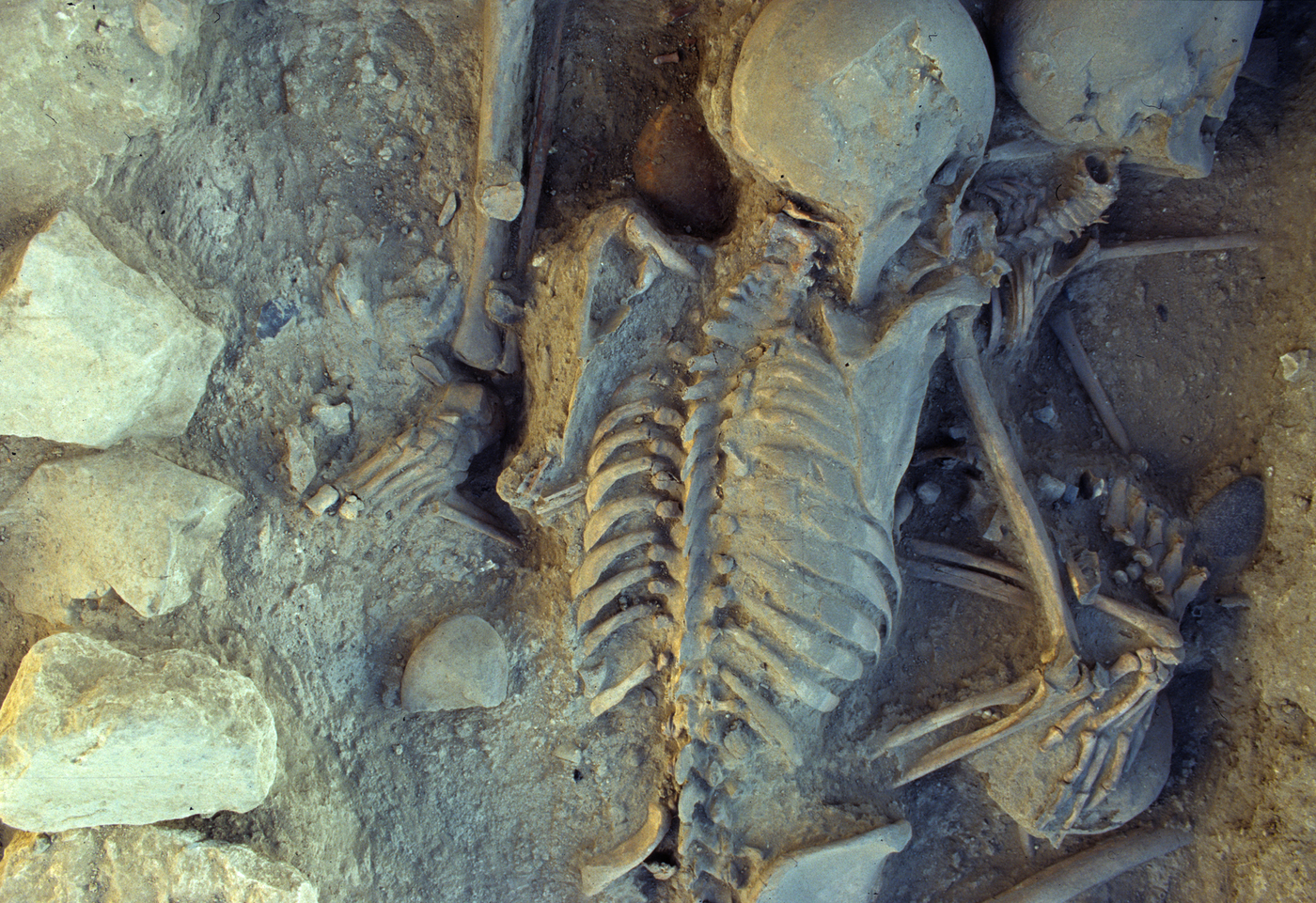The village of Dja’de el-Mughara
The site of Dja’de, in the Fertile Crescent, offers a unique insight into a changing society. The community was adopting new customs, habitats and dietary and funerary practices. Dja’de also has one of the few mural paintings dating from 11,000 years ago.

Discovered in 1991, the Dja’de site is located to the north of present-day Syria, on the eastern bank of the Euphrates. Archaeological excavations have revealed the remains of villages occupied for one thousand years. It is the only site known today in the north Levant with this sort of continuity over a period dated to 11,000 to 10,000 years ago. This is a core period in the process of Neolithisation.
Evolution of a village
The occupation of Dja’de is divided into three phases. The first is characterised by a group of rectangular houses and a large circular building with a partially hollowed-out floor - probably a community building. It contained the oldest known wall paintings found to date. They are geometric and painted in red and black on a white background.
The building was abandoned during the following phases. The houses had a larger format in phase II and a smaller one in phase III.
Changing dietary practices
The village was strategically located near the Euphrates, close to gatherable food resources. The villagers mainly hunted gazelles but they also killed aurochs and equids. The meat was consumed during feasts that shed light on the group and its practices during phase II. The site then attests to early attempts at growing cereals, which were still wild.
Dying in Dja’de
The excavations shed light on local funerary practices. The dead were generally buried under the floors of the houses and, during phase III, a special structure, called the "House of the Dead", was used to store the remains of more than 70 individuals. The study of these bones revealed evidence of the oldest known occurrence of tuberculosis (phases II and III).
Dja’de and the Syrian crisis
Supported by the French Ministry for Europe and Foreign Affairs on the advice of the Commission consultative des recherches archéologiques à l’étranger, the French archaeological mission in Dja’deworks to combat the theft and illicit trafficking of cultural property, which is one of the priorities of the French Ministry of Culture.
Although the excavations were suspended following the start of the crisis in Syria in 2011, the study of samples exported with the agreement of the Directorate General of Antiquities is yielding important results.


